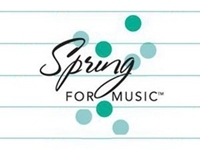Donald Rosenberg’s Take on “Spring for Music”
In the spring issue of Symphony magazine, Don Rosenberg, former music critic of the The Cleveland Plain Dealer and the newly-appointed editor of The Magazine of Early Music America wrote a very interesting overview of the “Spring for Music” (S4M) Festival, that presented its final week of concerts this past May at Carnegie Hall, contrasting repertoire choices of this year’s presenters with those of previous years, and those of renowned conductors of the past.
His overall assessment of the festival is that it “succeeded in promoting the momentary liberation of musicians and listeners from the predictable – and from the need to fill every seat in the house.” The festival presented 23 orchestras in 25 programs featuring almost 100 works of 70 composers.
The intent of the festival was to promote interesting programming. According to Thomas Morris, the festival’s artistic director, “An interesting program is not code for contemporary music. It’s really thinking about programming and being thoughtful about it.”
According to Rosenberg, “S4M is about putting a handful of beloved music alongside a torrent of unfamiliar works with the aim of making fresh connections between those pieces and with the audiences.” Most of the music presented was from the 20th century, following by the 21st. Four works from the 19th century and three from the 18th found their way into the mix.
Rosenberg describes some “audacious” programs presented by Gustav Mahler in 1911, Leopold Stokowski in 1923, and Serge Koussevitsky in 1945. His take on the programs presented during the four-year festival is that “the range of music … has been vast, placing diverse pieces in intriguing context and suggesting that orchestras might be far more daring if box offices weren’t so crucial for survival.” The festival removed this concern for the participants, guaranteeing $50,000 against the box office for each orchestra. Attendance over the four years was modest, though several performances did very well and almost sold out the house.
Rosenberg describes various themes used by participant orchestras, ranging from the Detroit Symphony performing four Ives symphonies, the Oregon Symphony’s “Music for a Time of War” program, and the Dallas Symphony’s premiere of Steven Stucky’s August 4, 1964 about Lyndon Johnson escalating the Vietnam War while the three slain civil rights workers were found in Mississippi, among many others. The Orpheus Chamber Orchestra commissioned five American composers to celebrate Bach with “New Brandenbergs.” The Pittsburgh Symphony presented a sacred music program, including the Mozart Requiem with readings of letters and scripture.
Rosenberg’s take on the Festival: “For participating ensembles, S4M has been a prime opportunity to show where they stand in the grand scheme of North American orchestras” but it is “too early to predict what impact Spring for Music will have on orchestra agendas.” Artistic Director Morris has “declared victory” buoyed by the fact “that S4M created excitement and inspired their participants to push their artistic envelopes.”
Rosenberg’s article is quite an informative overview of the programming presented during the four-year festival, and causes one to pause and think about the nature of traditional orchestral programming, what constitutes “creative” programming as presented by these orchestras, and what might become the norm in ten years or so. To read his article in its entirety, click here and scroll to page 32.


No comments yet.
Add your comment